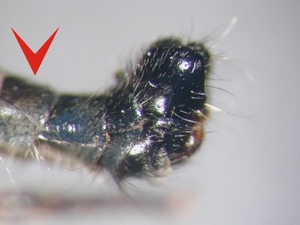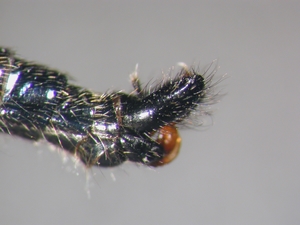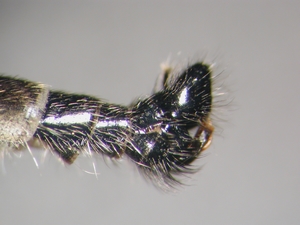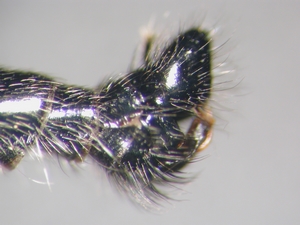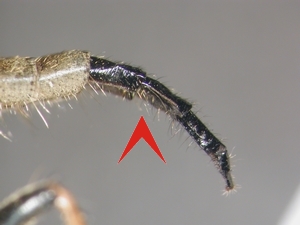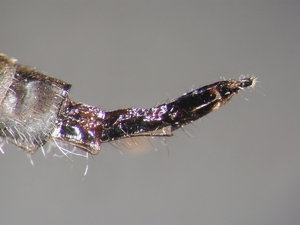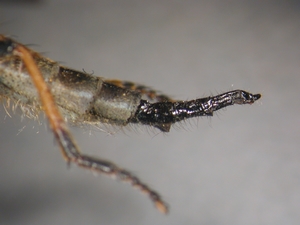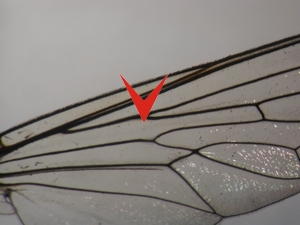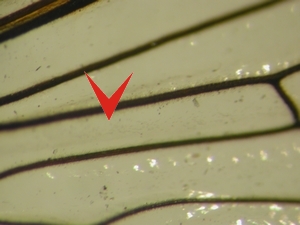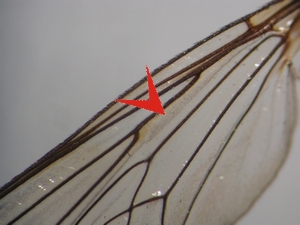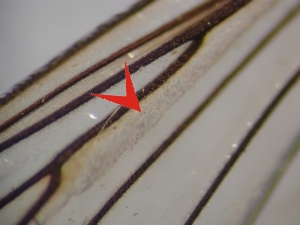g
Start g
- Robber flies of Germany -
[Key] Catalogue Comparisons Notes Terminology
key
- Subfamilies
- Asilinae
Neoitamus
- cothurnatus
- cyanurus
- socius
contents & layout
& copyright:
Fritz Geller-Grimm
Imprint
The males of the three species occurring in Germany can be fairly easily distinguished by the hypopygium. The females, however, were much more difficult to identify before SPEIGHT (1988) provided an identification key to females, which was based on the development of microtrichia in the basal radial cell of the wings. During my work I have not encountered variation in this character and therefore it seems good for distinguishing between females.
A table for comparison of taxa is provided on this CD-ROM.
| 1 a. |
Males . . . . . . . . . . . .
|
| 1 b. |
Females . . . . . . . . . . . .
|
| 2 a. |
Tergite 6 predominantly tomentose, only shiny dorsally; epandria short, more or less square, not as elongated as socius dorsally [Fig. 1]
. . . . . . . . . . . .
|
| 2 b. |
Tergite 6, like tergite 7, predominantly shiny (atomentose) [Fig. 2], [Fig. 3]
. . . . . . . . . . . .
|
| 3 a. |
Epandria more than twice as long as wide [Fig. 4]
. . . . . . . . . . . .
|
| 3 b. |
Epandria distinctly shorter and basally broader than apically [Fig. 5]
. . . . . . . . . . . .
|
| 4 a. |
Sternite 7 with tomentose longitudinal stripes [Fig. 6]
. . . . . . . . . . . .
|
| 4 b. |
Sternite 7 entirely shiny [Fig. 7], [Fig. 8]
. . . . . . . . . . . .
|
| 5 a. |
Microtrichia in basal radial cell developed only at apical margin [Fig. 9], [Fig. 10]
. . . . . . . . . . . .
|
| 5 b. |
Microtrichia in basal radial cell distinct on anterior margin [Fig. 11], [Fig. 12]
. . . . . . . . . . . .
|
